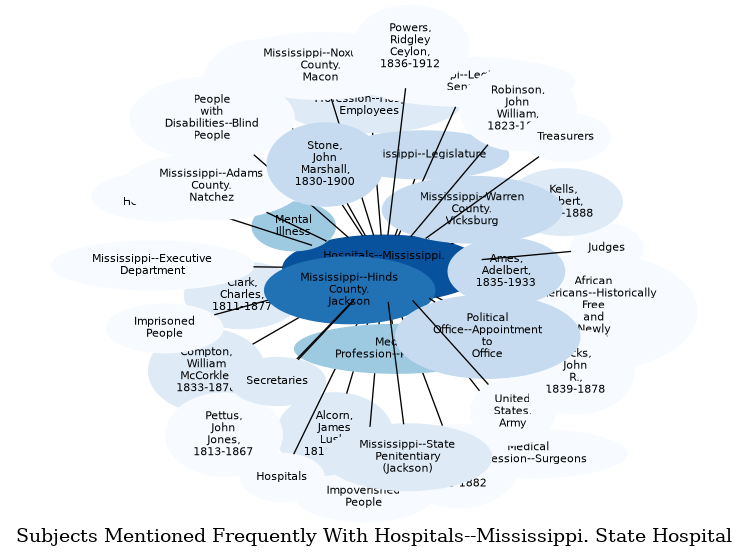Description
Operating at the state level, the State Hospital of Mississippi was located in Whitfield, Rankin County and was opened in 1848 as a racially segregated psychiatric facility run by the Mississippi Department of Mental Health. (Wikipedia)
See also: https://mississippiencyclopedia.org/entries/whitfield/
Related Subjects

The graph displays the other subjects mentioned on the same pages as the subject "Hospitals--Mississippi. State Hospital". If the same subject occurs on a page with "Hospitals--Mississippi. State Hospital" more than once, it appears closer to "Hospitals--Mississippi. State Hospital" on the graph, and is colored in a darker shade. The closer a subject is to the center, the more "related" the subjects are.